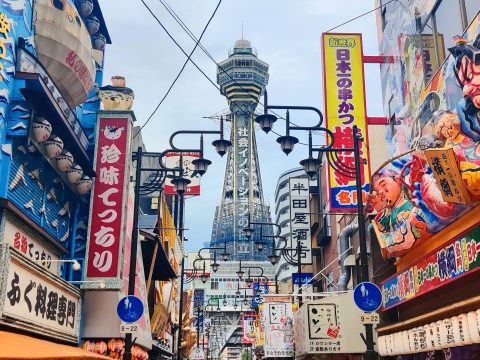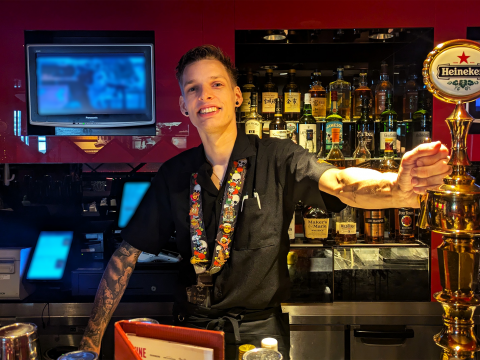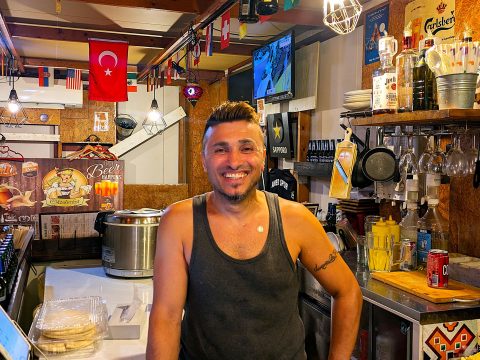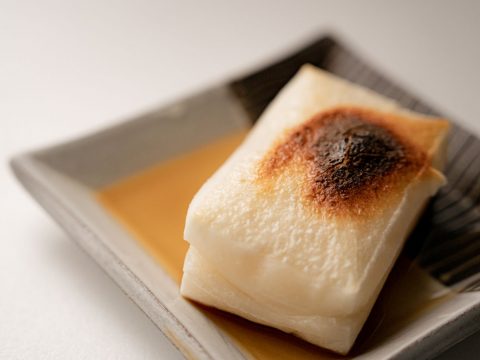Attending a Japanese Cooking Class
JAPANESE FOODS
03.07.2025
Although Japanese cuisine has always gained a lot of appreciation and respect around the world, it’s now more popular than ever. A record number of tourists visited Japan last year, more and more Japanese restaurants are being opened abroad, Japanese street food is a common topic on social media, and these are just a few examples of the worldwide interest in Japanese food.
Eating Out vs. Cooking at Home
When living in Japan, the easy or perhaps even obvious choice is to eat out instead of cooking at home. Especially in big cities, the abundance of restaurants is overwhelming. Any type of food that you might be in the mood for will likely be available nearby. And with many restaurants offering dishes or even sets for under 1000 yen, it’s very tempting to eat out often or even every day.
Since moving to Tokyo, I’ve always worked full–time and lived by myself or in a sharehouse. Buying fresh ingredients was sometimes risky, as I might not consume them in time. Besides that, at supermarkets, the most common and affordable products are usually Japanese products, which I sometimes don’t exactly know how to cook.
And because I would only cook for myself, I usually wasn’t motivated to put any effort into cooking, although I used to cook every day before moving to Japan. That’s when I noticed how much basic cooking knowledge I lacked regarding Japanese food.

The Start of the Lesson
So when my Dutch friend invited me to a cooking lesson, I was very excited, but at the same time, I wasn’t sure what to expect. It was her first cooking lesson too, and it was a one-time lesson, targeted towards foreigners.
It was located in a cooking studio in central Tokyo, and there were 2 cooking instructors and 8 participants, including us. The instructors were very friendly Japanese ladies who spoke English well.
In about 3 hours, we will prepare 7 small dishes and sukiyaki. That seemed like a big task, and I was a bit worried that we might have to rush to finish everything. After an introduction, we listened to some basic explanations about different types of soy sauce, vinegar, miso, and various side dishes.

Preparing the Side Dishes
The side dishes that we made were miso soup, kombu and salted plum as a rice topping, pickled cucumber, marinated potato, tamagoyaki, and stuffed tofu skin. As a dessert, we made mini dorayaki or pancakes with white bean paste.
The step-by-step explanation made me realize how many small dishes you can make in a short time. I’ve always loved the Japanese way of serving many small dishes instead of one big plate full of food, as we usually do in the Netherlands and many other Western countries.
However, it always seemed like a hassle to prepare, especially when cooking for only one person. After doing this, I realized that it only takes a few minutes per dish.

Tamagoyaki
Another dish that I’ve always wanted to try to make was tamagoyaki, or rolled omelette. It’s a dish that seems rather simple, but intimidating at the same time. The fact that even some Michelin–star sushi restaurants let their staff make tamagoyaki at the very end of their training made me think that it’s a highly skilled task.
After watching the instructor and making a decent–looking tamagoyaki a few minutes later, I realized that I was very wrong, and it’s actually a very easy dish to make when you own a tamagoyaki pan.

Sukiyaki
After some explanation about sukiyaki, we started to cut the mushroom and carrot into cute shapes. The rest was already cut and put on plates for us.
Sukiyaki is a popular hot pot dish with beef, various vegetables, and warishita, which is a sauce typically used for sukiyaki. We were delighted when we heard that our sukiyaki had A5 wagyu slices in it.

After putting all our dishes together on a tray, the instructors heated up our sukiyaki pots, and we all ate together.
Everyone enjoyed the food, and it was a good opportunity to get to know the other participants better. Some of them also lived in Japan, and a few others were tourists from different countries.
All in all, I had a great experience and I gained a lot of basic cooking knowledge in just a few hours’ time. I think this is a very fun and useful experience, both for people living in Japan as well as tourists who want to cook Japanese food at home more often.
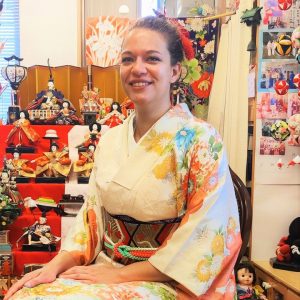
Mietta Varszegi
Mietta grew up in the Netherlands and moved to Japan in 2019 to work as an English teacher. Now, she has 3 different jobs, explores Tokyo on days off and takes trips around Japan whenever she can. But everywhere in Japan, the goal is the same: visit as many shrines, castles and parks as possible and eat everything!
Read previous articles by the writer
Read latest articles
KEYWORDS
- # PICKPICK
- # Resume
- # alcohol
- # Rice
- # Soup
- # winter food
- # Fast Food
- # seafood
- # spicy foods
- # raw food
- # fermented food
- # Transportation
- # MEAT
- # Edo culture
- # suits
- # clothing
- # drink
- # fish
- # seasoning
- # Japanese New Years Foods
- # Toshikoshi soba
- # Osechi Ryori
- # Ozoni
- # Christmas
- # Japanese fusion pasta
- # Wafu Pasta
- # Japanese Hot Pot
- # なべ
- # 鍋
- # Miyazaki
- # Chicken Nanban
- # Karamen
- # Autumn Wagashi
- # Mushi-yokan
- # Imo-yokan
- # Japanese Autumn Fruits
- # Autumn
- # Vending Machine
- # fall
- # dango
- # Chestnut rice
- # saury
- # Mushroom
- # Rice vinegar
- # Japanese condiments
- # 調味料
- # Sake
- # Mirin
- # Soy sauce
- # Japanese Noodles
- # Udon
- # Ramen
- # Yakisoba
- # Soba
- # Japanese Seaweed
- # 海藻
- # かいそう
- # Payslip
- # Training
- # Japanese summer foods
- # 和菓子
- # Wagashi
- # ryokucha
- # 夏
- # 飲み物
- # Ramune
- # ラムネ
- # Pokari Sweat
- # ポカリスエット
- # Calpis
- # カルピス
- # Mugicha
- # ume
- # 梅
- # うめ
- # umeshu
- # job hunting
- # tofu
- # Recruitment in Japan
- # miso
- # Japanese cuisine
- # Yellowtail and bonito
- # Children’s Day
- # Kashiwa Mochi
- # Chimaki
- # fruits
- # Kusamochi
- # Types of Agriculture in Japan
- # bread
- # パン
- # パン屋さん
- # japanese bread
- # shokupan
- # meal blead
- # anko bread
- # 桜
- # さくら
- # cherry blossom
- # visa
- # hanami
- # omotenashi
- # sakura
- # おもてなし
- # Japanese hospitality
- # oshibori
- # wet hand towel
- # hand towel
- # restaurant
- # Commuting in Japan
- # Women-only cars
- # Exit gate
- # japanese train
- # train
- # valentine
- # Japanese sweets
- # 朝食
- # Japanese Breakfast
- # Breakfast
- # Japanese
- # 日本
- # healthy
- # persimmons
- # hoshigaki
- # HR
- # work in Japan
- # jinji ido
- # corporate systems
- # Japanese work culture
- # bento
- # ekiben
- # shinkansen
- # omiyage
- # train station
- # Japanese culture
- # work culture
- # mentaiko
- # umeboshi
- # Japanese snacks
- # potato chips
- # Japanese potato chips
- # Japanese writing
- # seaweed
- # konbu
- # ocean foods
- # shio konbu
- # dashi
- # miso soup
- # food processing
- # pear
- # nashi
- # sweet potato
- # japanese sweet potato
- # stingray
- # satsuma imo
- # food value chain
- # homecooking
- # agriculture
- # Japanese homecooking
- # farming
- # nikujaga
- # shojin ryori
- # meat and potatoes
- # traditional foods
- # comfort food
- # buddhist food
- # manufacturing
- # factory
- # eihire
- # vegetarian
- # food and beverage
- # izakaya
- # yatai
- # japanese festival
- # taiyaki
- # matsuri
- # summer
- # Ikayaki
- # smart agriculture
- # shaved ice
- # kakigori
- # かき氷
- # summer dessert
- # Japan
- # Japanese foods
- # dessert
- # fruit
- # matcha
- # icecream
- # Pikcup
- # Pikc up
- # Pcikup
- # skilled labor visa
- # working visa japan
- # Dineer Table in Japan
- # Japanese manner
- # Japanese food
- # Japanese Table Manner
- # Chopsticks
- # Japanese traffic signs
- # traffic information
- # road rules in Japan
- # chocolate
- # green tea
- # Osaka
- # Work Japan
- # Japanese company
- # ikura
- # sushi
- # nigiri
- # wasabi
- # PCIK
- # PICK UP
- # PICK
- # PICKUP


